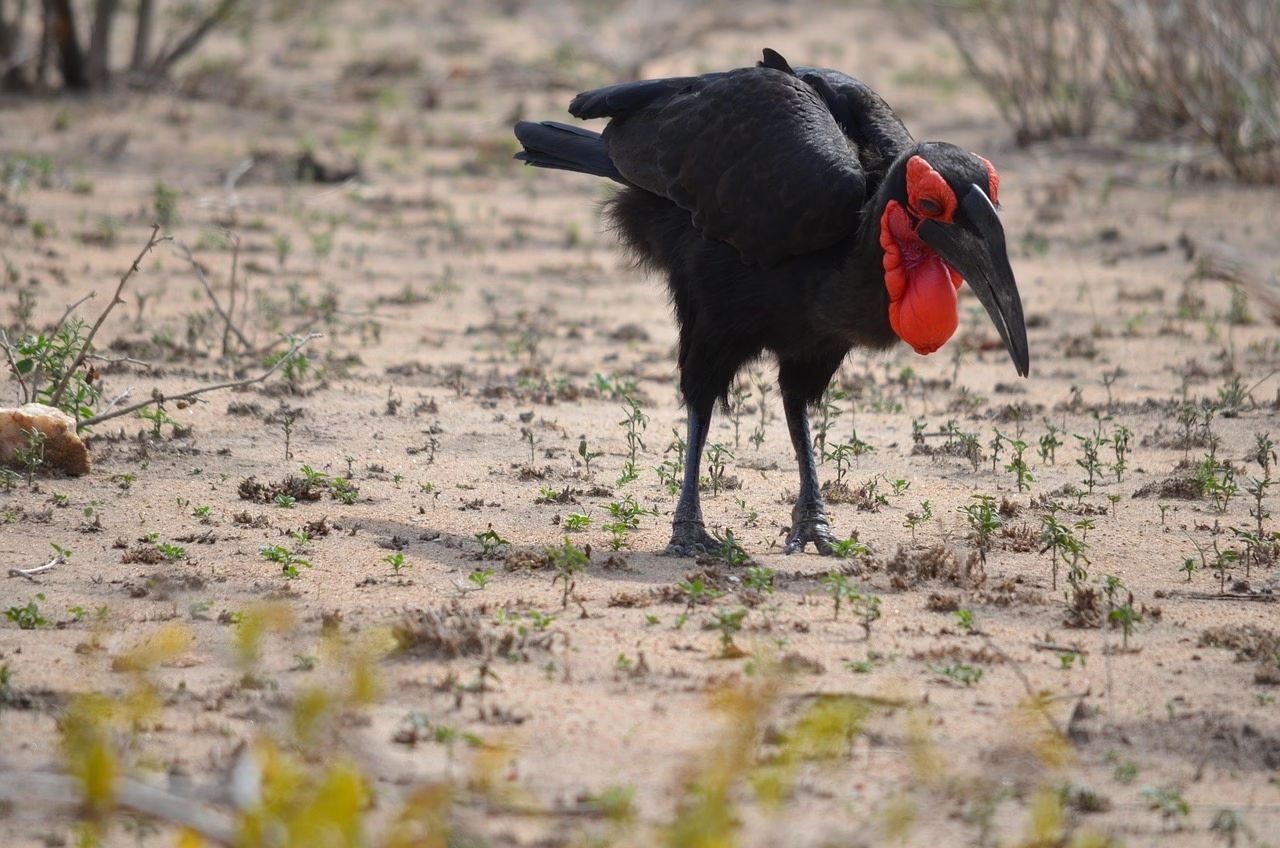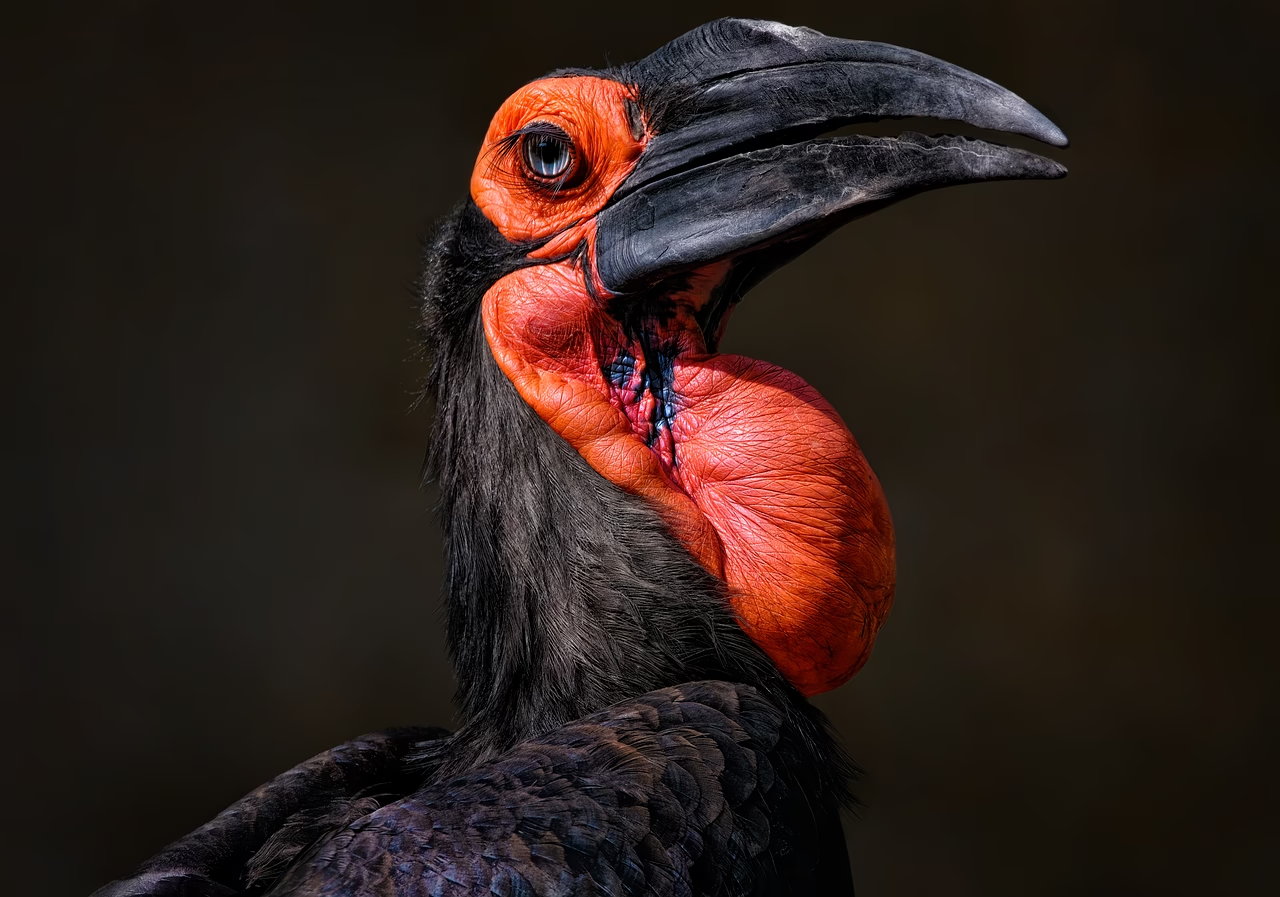
5 Fascinating facts About the Ground Hornbill
5 Fascinating Facts About the Ground Hornbill: Nature’s Mysterious Messenger of the Savanna
The African wilderness is alive with wonder, and few birds embody this wild magic quite like the ground hornbill. With its striking appearance, echoing call, and rare behavior, this bird stands out not only for its physical attributes but also for the stories it tells across cultures and landscapes. Found walking gracefully across the African savannas, the ground hornbill represents something deeper an ancient spirit of the land, a symbol of time, and a true marvel of avian life. Here are five fascinating facts that make the ground hornbill one of Africa’s most intriguing birds.
1. They Are the Largest Hornbills in the World

The ground hornbill is the heavyweight champion of the hornbill family. With males weighing up to 6 kilograms and measuring over a meter in length, these birds are not built for flight like their tree-dwelling relatives. Instead, they are terrestrial creatures, spending most of their lives walking the African grasslands in search of food.
Unlike other hornbills that rely heavily on their wings, ground hornbills use their strong legs to cover long distances as they hunt. Their massive size is not just for show it gives them an advantage when preying on animals such as lizards, snakes, insects, small mammals, and even tortoises. Watching one in action feels like witnessing a prehistoric creature navigating a modern landscape. It’s both majestic and humbling.
2. Their Calls Echo Like Thunder Across the Savanna
One of the most distinctive features of the ground hornbill is its haunting, booming call. Often heard at dawn, the deep reverberating sound can carry for more than three kilometers and is used primarily to communicate with other members of the group or to mark territory.
In many African cultures, this resonant call is seen as a sign from the spirit world. Some communities believe that it heralds the arrival of rain or acts as a warning of an approaching storm. This powerful vocalization, which resembles the low notes of a tuba, adds a mystical aura to the bird, as if nature itself is speaking through it.
3. They Mate for Life and Raise Their Young with Patience
Ground hornbills are not only physically impressive but also emotionally compelling. These birds form long-term monogamous bonds and usually live in small family groups that include a dominant breeding pair and several “helpers.” These helpers are typically older offspring that assist in raising the new chicks.
Breeding is a rare and delicate process. Ground hornbills lay only one or two eggs every few years, and even then, usually only one chick survives. The family invests months in rearing this single chick, with both parents and helpers working tirelessly to feed and protect it. This cooperative breeding strategy is unique and emphasizes just how precious and vulnerable each new life is.
It’s a beautiful reminder from nature that great things take time and care and that community effort matters.
4. They’re Among the Few Bird Species That Use Tools
The ground hornbill’s intelligence is another reason it fascinates ornithologists and wildlife enthusiasts alike. While tool use is rare in the bird world, especially among non-parrot and non-crow species, ground hornbills have been observed using sticks to extract prey from tree bark or from small crevices. They’ve even been seen manipulating objects to uncover hidden insects.
This level of problem-solving reveals a remarkable cognitive capacity. It suggests that ground hornbills are not just instinctive hunters but thinkers capable of learning and adapting to challenges in their environment. Observing one work its way through a problem offers a glimpse into the silent genius that nature so often hides in plain sight.
5. They Are Sacred—and Critically Endangered
Across much of Africa, the ground hornbill holds a deep spiritual significance. In many traditions, it is revered as a symbol of protection, wisdom, and foresight. Some communities believe the bird acts as a guardian between the physical and spiritual realms, and its presence near a home is seen as a blessing.
But this revered bird is now under serious threat. Southern Ground Hornbills, in particular, are listed as “Vulnerable” by the IUCN, with populations declining due to habitat loss, poisoning, collisions with power lines, and low reproductive rates. In some regions, cultural shifts have led to the loss of traditional beliefs that once protected the bird.
Conservation efforts are underway across southern and eastern Africa. These include breeding programs, educational campaigns, and community-based conservation initiatives aimed at restoring the ground hornbill’s status not just as a bird of myth and legend, but as a vital part of the ecosystem.
Final Thoughts: A Bird That Walks Between Worlds
The ground hornbill is more than just a bird. It is a symbol of Africa’s wild soul strong, mysterious, and deeply connected to both the land and the people. Every time it takes a step across the grasslands, it walks through layers of history, ecology, and culture. It reminds us of what it means to live in balance with the world around us, to honor our connections, and to protect what is precious.
By learning about the ground hornbill, we not only discover the fascinating facts of one of Africa’s most iconic birds, but we also begin to see our responsibility in preserving the wild stories of our planet. Let its call stir something ancient within you—a sense of wonder, a call to action, a moment of awe. Because when the ground hornbill speaks, it is the voice of the earth itself echoing through time.


